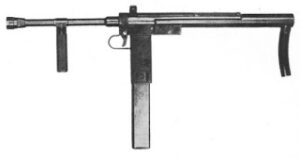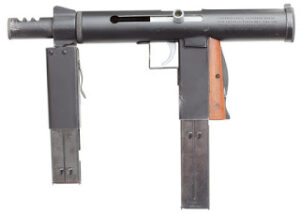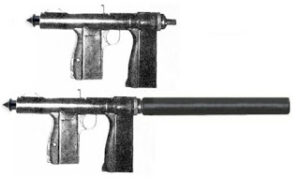Regular readers may recall that some time ago I started reading Konrad Lorenz's “On Aggression”. Reading further yesterday I came across the chapter on Humility in Science. In this section Lorenz describes three factors that he believes inhibits mankind's understanding of his own behaviour. This chapter, and indeed the entire book is worth reading. Below are some selected paragraphs.
Lorenz: I may claim that the contents of the preceding chapters are natural science: the recorded facts are verified, as far as it is possible to say of the results of a science as young as comparative ethnology. Now, however, we leave the record of facts elicited by observations and experiments on the aggressive behaviour of animals and turn to the question of whether they can teach us something applicable to man and useful in circumventing the dangers arising from his aggressive drives. There are people who see in this question an insult to human dignity. All too willingly man sees himself as the centre of the universe, as something not belonging to the rest of nature but standing apart as a different and higher being. Many people cling to this error and remain deaf to the wisest command ever given by a sage, the famous “Know thyself” inscribed in the temple of Delphi. What keeps people from listening to it? There are three obstacles, all of them motivated by strong emotions.
The first is easily overcome by the man of insight; the second is at least honourable, in spite of its harmful effects; the third is understandable from the standpoint of cultural history and is therefore forgivable, but it is the most difficult to remove.
All three are inseparably bound up and shot through with a most dangerous human quality, of which the proverb says that it goes before a fall: pride. I will now discuss these obstacles and try to show in what manner they are harmful, and then I will do my best to contribute towards their elimination.
The first obstacle is the most primitive. It hinders self-knowledge in inhibiting man’s awareness of his own evolutionary origin. Its irrational quality and its stubborn tenacity are paradoxically derived from the great likeness which our nearest animal relations bear to us. If people did not know the chimpanzee they would be more easily convinced of their own origin…(snip)…he is irresistibly funny and at the same time as common, as vulgar, as no other animal but a debased human being can ever be.
(snip) The second obstacle to self-knowledge is our reluctance to accept the fact that our own behaviour obeys the laws of natural causation. Bernhard Hassenstein has called this attitude the “anticausal value judgement”. The reluctance of many people to recognize the causal determination of all natural phenomena, human behaviour included, undoubtedly comes from the justifiable wish to possess a free will and to feel that our actions are determined not by fortuitous causes but by higher aims.
A third great obstacle to human self-knowledge is – at least in our Western cultures – a heritage of idealistic philosophy. It stems from the dichotomy of the world into the external world of things, which to idealistic thought is devoid of values, and the inner world of human thought and reason to which alone values are attributed. This division appeals to man’s spiritual pride. It supports him in his reluctance to accept the determination of his own behaviour by natural laws. How deeply it has penetrated into accepted ways of thinking can be seen from the alteration in meaning of the words ‘idealist’ and ‘realist’, which originally signified philosophic attitudes but today imply moral value judgements. We must realize how common it has become in Western, particularly German, thought to consider that whatever can be explained by the laws of nature is automatically devoid of higher values. To anybody thinking in this way explanation means devaluation. …(snip)… Science is often accused of having brought terrible dangers upon man by giving him too much power over nature. This accusation would be justified only if scientists were guilty of having neglected man himself as a subject for research. The danger to modern man arises not so much from his power of mastering natural phenomena as from his powerlessness to control sensibly what is happening today in his own society. I maintain that this powerlessness is entirely the consequence of the lack of human insight into the causation of human behaviour. What I intend to show is that the insight necessary to control our own social behaviour is blocked by the three pride-inspired obstacles to self-knowledge. These obstacles prevent the causal analysis of all those processes in the life of man which he regards as being of particular value, in other words those processes of which he is proud. It cannot be stressed enough: the fact that the functions of our digestive system are well known and that, as a result of this knowledge, medicine, particularly intestinal surgery, saves many thousands of human lives annually, is entirely due to the fortunate circumstance that the functions of these organs do not evoke particular awe or reverence. If, on the other hand, we are powerless against the pathological disintegration of our social structure, and if, armed with atomic weapons, we cannot control our aggressive behaviour any more sensibly than any animal species, this deplorable situation is largely due to our arrogant refusal to regard our own behaviour as equally subject to the laws of nature and accessible to causal analysis. Science is not to blame for men’s lack of self-knowledge. Giordano Bruno went to the stake because he told his fellow men that they and their planet were only a speck of dust in a cloud of countless other specks. When Charles Darwin discovered that men are descended from animals they would have been glad to kill him, and there was certainly no lack of attempts to silence him. When Sigmund Freud attempted to analyse the motives of human social behaviour and to explain its causes from the subjective-psychological side, but with the method of approach of true natural science, he was accused of irreverence, blind materialism and even pornographic tendencies. Humanity defends its own self-esteem with all its might, and it is certainly time to preach humility and try seriously to break down all obstructions to self-knowledge…(snip)
…..The first great obstacle to human self-knowledge, the reluctance to believe in our evolution from animals, is based, as I have tried to show, on ignorance or misunderstanding of the essence of organic creation. Fundamentally at least, it should be possible to remove this obstacle by teaching and learning. Similar means should help to remove the second obstacle, now to be discussed, the antipathy towards causal determination; but in this case the misunderstanding is far more difficult to clear up. Its root is the basically erroneous belief that a process which is causally determined cannot at the same time be goal-directed. Admittedly there are countless processes in the universe which are not goal-directed, and in these cases the question “What for?” must remain unanswered, unless we are determined to find an answer at any price, in measureless over-estimation of the importance of man, as for instance, if we explain the rising of the moon as a switching on of night illumination for our especial benefit. There is, however, no process to which the question of causes cannot be applied. As already stated in Chapter 3, the question “What is it for?” only makes sense where the great constructors – or a living constructor constructed by them – have been at work. Only where parts of a systemic whole have become specialized, by division of labour, for different functions, each completing the other, does the question “What is it for?” make any sense. This holds good for life processes, as also for those lifeless structures and functions which the living being makes use of for its own purposes, for instance, man-made machines. In these cases the question “What is it for?” is not only relevant but absolutely necessary. We could not understand the cause of the cat’s sharp claws if we had not first found out that their special function was catching mice. At the beginning of Chapter 6, on the great parliament of instincts, we have already said that the answering of the question “What is it for?” does not rule out the question of the cause. How little the two questions preclude each other can be shown by a simple analogy. I am driving through the countryside in my old car, to give a lecture in a distant town, and I ponder on the usefulness of my car, the goals or aims which are so well served by its construction, and it pleases me to think how all this contributes to achieve the purpose of my journey. Suddenly the motor coughs once or twice and peters out. At this stage I am painfully aware that the reason for my journey does not make my car go; I am learning the hard way that aims or goals are not causes. It will now be well for me to concentrate exclusively on the natural causes of the car’s workings, and to find out at what stage the chain of their causation was so unpleasantly interrupted. Medicine, “queen of applied sciences”, furnishes us even better examples of the erroneousness of the view that purposiveness and causality preclude each other. No “life purpose”, no “wholemaking factor” and no sense of imperative obligation can help the unfortunate patient with acute appendicitis, but even the youngest hospital surgeon can help him if he has rightly diagnosed the cause of the trouble. The appreciation of the fact that life processes are directed at aims or goals, and the realization of the other fact that they are, at the same time, determined by causality, not only do not preclude each other but they only make sense in combination. If man did not strive towards goals, his questions as to causes would have no sense; if he has no insight into cause and effect, he is powerless to guide effects towards determined goals, however rightly he may have understood the meaning of these goals. This relation between the purposive and the causal aspects of life processes seems to me quite obvious, but evidently many people are under the illusion of their incompatibility…(snip)… Probably the reason why people are so afraid of causal considerations is that they are terrified lest insight into the causes of earthly phenomena could expose man’s free will as an illusion. In reality the fact that I have a will is as undeniable as the fact of my existence. Deeper insight into the physiological concatenation of causes of my own behaviour cannot in the least alter the fact that I will but it can alter what I will. Only on very superficial consideration does free will seem to imply that “we can want what we will” in complete lawlessness, though this thought may appeal to those who flee as in claustrophobia from causality. We must remember how the theory of indeterminism of microphysical phenomena, the “acausal” quantum physics, was avidly seized and on its foundations hypotheses built up to mediate between physical determinism and belief in free will, though the only freedom thereby left to the will was the lamentable liberty of the fortuitously cast die. Nobody can seriously believe that free will means that it is left entirely to the will of the individual, as to an irresponsible tyrant, to do or not do whatever he pleases. Our freest will underlies strict moral laws, and one of the reasons for our longing for freedom is to prevent our obeying other laws than these. It is significant that the anguished feeling of not being free is never evoked by the realization that our behaviour is just as firmly bound to moral laws as physiological processes are to physical ones. We are all agreed that the greatest and most precious freedom of man is identical with the moral laws within him. Increasing knowledge of the natural causes of his own behaviour can certainly increase a man’s faculties and enable him to put his free will into action, but it can never diminish his will. If, in the impossible case of an utopian complete and ultimate success of causal analysis, man should ever achieve complete insight into the causality of earthly phenomena, including the workings of his own organism, he would not cease to have a will but it would be in perfect harmony with the incontrovertible lawfulness of the universe, the Weltvernunft of the Logos. This idea is foreign only to our present day western thought; it was quite familiar to ancient Indian philosophy and to the mystics of the middle ages.
I now come to the third great obstacle to human self-knowledge, to the belief – deeply rooted in our western culture – that what can be explained in terms of natural science has no values. This belief springs from an exaggeration of Kant’s values-philosophy, the consequence of the idealistic dichotomy of the world into the external world of things and the internal laws of human reason. As already intimated, fear of causality is one of the emotional reasons for the high values set on the unfathomable, but other unconscious factors are also involved. The behaviour of the ruler, the father-figure, whose essential features include an element of arbitrariness and injustice, is unaccountable. God’s decree is inscrutable. Whatever can be explained by natural causes can be controlled, and with its obscurity it loses most of its terror. Benjamin Franklin made of the thunderbolt, the instrument of Zeus’s unaccountable whim, an electric spark against which the lightning conductors of our houses can protect us. The unfounded fear that nature might be desecrated by causal insight forms the second chief motive of people’s fear of causality. Hence there arises a further obstacle to science, and this is all the stronger the greater a man’s sense of the aesthetic beauty and awe-inspiring greatness of the universe and the more beautiful and venerable any particular natural phenomenon seems to him. The obstacle to research arising from these unfortunate associations is the more dangerous since it never crosses the threshold of consciousness. If questioned, such people would profess in all sincerity to be supporters of scientific research, and within the limits of a circumscribed special field they may even be great scientists. But subconsciously they are firmly resolved not to carry their natural explanations beyond the limits of the awe-inspiring. Their error does not lie in the false assumption that some things are inexplorable: nobody knows so well as the scientist that there are limits to human understanding, but he is always aware that we do not know where these limits lie. Kant says, “Our observation and analysis of its phenomena penetrate to the depth of nature. We do not know how far this will lead us in time.” The obstacle to scientific research produced by the attitude here discussed consists in setting a dogmatic border between the explorable and what is considered beyond exploration. Many excellent observers have so great a respect for life and its characteristics that they draw the line at its origin. They accept a special life force, force vitale, a direction-giving wholemaking factor which, they consider, neither requires nor permits an explanation. Others draw the line where they feel that human dignity demands a halt before any further attempts at natural explanation. The attitude of the true scientist towards the real limits of human understanding was unforgettably impressed on me in early youth by the obviously unpremeditated words of a great biologist; Alfred Kühn finished a lecture to the Austrian Academy of Sciences with Goethe’s words, “It is the greatest joy of the man of thought to have explored the explorable and then calmly to revere the inexplorable.” After the last word he hesitated, raised his hand in repudiation and cried, above the applause, “No, not calmly, gentlemen; not calmly!” One could even define a true scientist by his ability to feel undiminished awe for the explorable that he has explored; from this arises his ability to want to explore the apparently inexplorable: he is not afraid of desecrating nature by causal insight. Never has natural explanation of one of its marvellous processes exposed nature as a charlatan who has lost the reputation of his sorcery; natural causal associations have always turned out to be grander and more awe-inspiring than even the most imaginative mythical interpretation.






 Here is how the Soviet Infantrymen did it:
Here is how the Soviet Infantrymen did it:







































